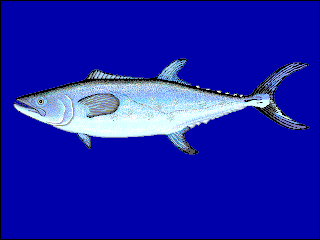
Pseudotsuga is a genus of evergreen coniferous trees in the family Pinaceae. Common names for species in the genus include Douglas fir, Douglas-fir, Douglas tree, Oregon pine and Bigcone spruce. Pseudotsuga menziesii is widespread in western North America and is an important source of timber. The number of species has long been debated, but two in western North America and two to four in eastern Asia are commonly acknowledged.

Hibiscus is a genus of flowering plants in the mallow family, Malvaceae. The genus is quite large, comprising several hundred species that are native to warm temperate, subtropical and tropical regions throughout the world. Member species are renowned for their large, showy flowers and those species are commonly known simply as "hibiscus", or less widely known as rose mallow. Other names include hardy hibiscus, rose of sharon, and tropical hibiscus.

Gleditsia is a genus of trees in the family Fabaceae, subfamily Caesalpinioideae, native to the Americas and Asia. The Latin name commemorates Johann Gottlieb Gleditsch, director of the Berlin Botanical Garden, who died in 1786.

Hibiscus rosa-sinensis, known colloquially as Chinese hibiscus, China rose, Hawaiian hibiscus, rose mallow and shoeblack plant, is a species of tropical hibiscus, a flowering plant in the Hibisceae tribe of the family Malvaceae. It is widely cultivated as an ornamental plant in the tropics and subtropics, but its native range is Vanuatu.

The Chinese mantis is a species of mantis native to Asia and the nearby islands. In 1896, this species was accidentally introduced by a nursery tender at Mt. Airy near Philadelphia, United States. Tenodera sinensis often is erroneously referred to as Tenodera aridifolia sinensis because it was at first described as a subspecies of Tenodera aridifolia, but Tenodera sinensis is now established as a full species.

Camellia sinensis is a species of evergreen shrub or small tree in the flowering plant family Theaceae. Its leaves, leaf buds, and stems can be used to produce tea. Common names include tea plant, tea shrub, and tea tree.

The Chinese mitten crab, also known as the Shanghai hairy crab, is a medium-sized burrowing crab that is named for its furry claws, which resemble mittens. It is native to rivers, estuaries and other coastal habitats of East Asia from Korea in the north to Fujian, China in the south. It has also been introduced to Europe and North America, where it is considered an invasive species. The species features on the list of invasive alien species of Union concern. This means that the import of the species and trade in the species is forbidden in the whole of the European Union.

Angelica sinensis, commonly known as dong quai or female ginseng, is a herb belonging to the family Apiaceae, indigenous to China. Angelica sinensis grows in cool high altitude mountains in East Asia. The yellowish brown root of the plant is harvested in the fall and is a well-known Chinese medicine which has been used for thousands of years.

The Chinese softshell turtle is a species of softshell turtle that is native to mainland China and Taiwan, with records of escapees—some of which have established introduced populations—in a wide range of other Asian countries, as well as Spain, Brazil and Hawaii.

Miscanthus sinensis, the eulalia or Chinese silver grass, is a species of flowering plant in the grass family Poaceae, native to eastern Asia throughout most of China, Japan, Taiwan and Korea.

The South China catshark is a catshark of the family Scyliorhinidae, known only from the holotype, which was taken from the South China Sea at a depth of 537 m. Its length is 42 cm, but this measurement was taken from an immature specimen. The reproduction of the South China catshark is oviparous.

The Asian parti-colored bat is a species of parti-coloured bat. An adult Asian parti-colored bat has a body length of 6–7 cm (2.4–2.8 in), a tail of 4.3–4.5 cm (1.7–1.8 in), and a wing length of 5 cm (2.0 in). Asian parti-colored bats are distributed across East Asia, from Taiwan through eastern China, eastern Mongolia and Russia (Siberia) to the Korean Peninsula and Japan.

The Chinese stripe-necked turtle or golden thread turtle, is a species of turtle in the family Geoemydidae. They are widely distributed in the subtropical regions of Taiwan.

The fanray is a species of ray in the family Platyrhinidae that lives in the western Pacific Ocean. It typically grows to a length of 30–50 centimetres (12–20 in) and a weight of 200–500 grams (7.1–17.6 oz), with a brown upperside and a white underside. It eats fish and crustaceans and has poor mobility. Males live to age five and females to age twelve, with both sexes maturing between two and five years. The species is found in China, Japan, Taiwan, Korea, Vietnam, and possibly Indonesia, in waters shallower than 100 metres (330 ft). It is probable that its population is declining due to being caught as a bycatch.

Tephrinectes sinensis, the Chinese brill, is a species of flatfish in the large-tooth flounder family, Paralichthyidae. It is the only member of its genus Tephrinectes. Like the rest of the large-tooth flounders, it has both eyes on the left side of its head.

The Chinese stingray is a little-known species of stingray in the family Dasyatidae, found in the northwestern Pacific Ocean off the coasts of China and Korea. This species is characterized by a band of small dermal denticles running along the upper surface of its diamond-shaped pectoral fin disc, from the snout to the tail spine. It can grow to 40 cm (16 in) across and 82 cm (32 in) long. The Chinese stingray is taken incidentally in bottom trawls and is one of the three most commonly marketed stingrays in China. At present, the International Union for Conservation of Nature (IUCN) has assessed its conservation status as endangered.

The Chinese mackerel, also known as the Chinese seerfish, is a ray-finned bony fish in the family Scombridae, better known as the mackerel family. More specifically, this fish is a member of the tribe Scomberomorini, the Spanish mackerels. It is a marine species occurring in the Western Pacific Ocean, but it also enters the Mekong River.
Polyspondylogobius sinensis is a species of ray-finned fish from the family Gobiidae, the true gobies. It is native to the Pacific coast of China where it is only known to occur in marine and brackish waters in Guangdong and Guangxi provinces. This species occurs in shallow bays, around river mouths and in tide pools. This species grows to a length of 4.9 centimetres (1.9 in) SL. This species is the only known member of its genus.

Helicolenus hilgendorfii, Hilgendorf's saucord, is a species of marine ray-finned fish belonging to the subfamily Sebastinae, part of the family Scorpaenidae. It is found in the northwestern Pacific Ocean.

Liolophura is a genus of chitons, or polyplacophorans, marine mollusks whose shell is composed of eight articulating plates or valves.


















